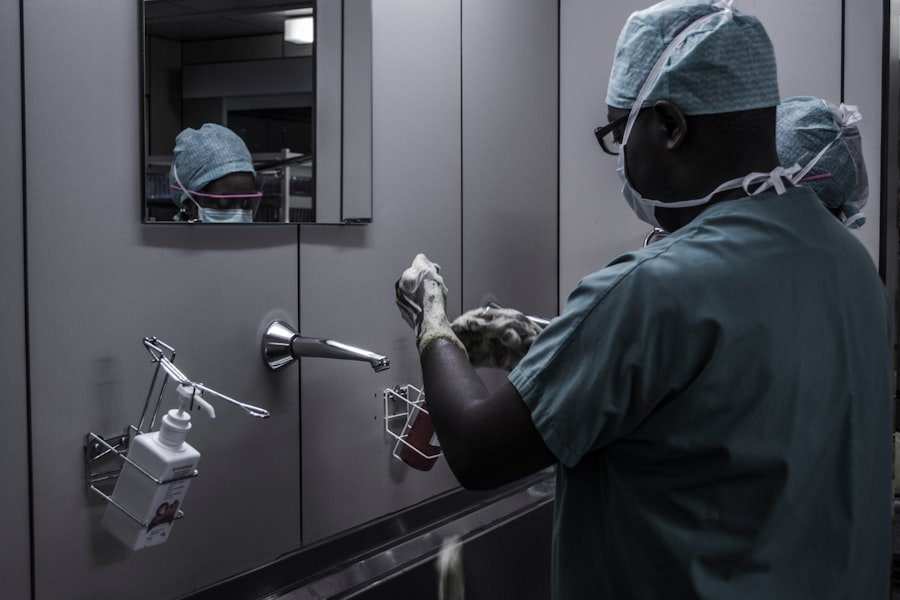Artificial Intelligence (AI) has emerged as a transformative force in the field of medical diagnostics, fundamentally altering how healthcare professionals approach the identification and management of diseases. By leveraging vast amounts of data, AI systems can analyse patterns and make predictions that would be nearly impossible for human practitioners to achieve alone. This capability is particularly significant in an era where the volume of medical data is growing exponentially, driven by advancements in technology and the increasing digitisation of health records.
AI algorithms can sift through this data, identifying subtle correlations and trends that may indicate the presence of a disease long before symptoms manifest. Moreover, AI’s role in diagnostics extends beyond mere data analysis. It encompasses the development of sophisticated tools that assist clinicians in making informed decisions.
For instance, AI-powered diagnostic systems can provide real-time support during patient examinations, offering suggestions based on historical data and current clinical guidelines. This integration of AI into the diagnostic process not only enhances the accuracy of diagnoses but also streamlines workflows, allowing healthcare professionals to focus more on patient care rather than administrative tasks. As a result, AI is not merely a supplementary tool; it is becoming an integral component of modern diagnostic practices.
Summary
- AI plays a crucial role in diagnostics by analysing large amounts of data to assist healthcare professionals in making accurate and timely diagnoses.
- Machine learning is revolutionising medical imaging by improving the accuracy and speed of identifying and diagnosing medical conditions from imaging scans.
- AI has a significant impact on early disease detection by identifying patterns and anomalies in patient data that may indicate the presence of a disease at an early stage.
- AI improves accuracy and efficiency in diagnosing medical conditions by reducing human error and providing insights that may not be immediately apparent to healthcare professionals.
- AI plays a key role in personalised medicine and treatment by analysing individual patient data to tailor treatment plans and interventions to specific patient needs.
How Machine Learning is Revolutionizing Medical Imaging
Machine learning, a subset of AI, is particularly influential in the realm of medical imaging. Traditional imaging techniques, such as X-rays, MRIs, and CT scans, have long been essential for diagnosing various conditions. However, interpreting these images requires extensive training and experience, and even seasoned radiologists can miss critical details.
Machine learning algorithms are now being employed to enhance image analysis by automating the detection of abnormalities. These algorithms are trained on vast datasets of annotated images, enabling them to learn the nuances of different conditions and improve their diagnostic accuracy over time. One notable example of machine learning’s impact on medical imaging is its application in detecting cancers.
Studies have shown that AI systems can outperform human radiologists in identifying certain types of tumours in mammograms and lung scans. For instance, a study published in the journal Nature demonstrated that an AI model could reduce false positives and false negatives in breast cancer screening, leading to earlier and more accurate diagnoses. This capability not only improves patient outcomes but also alleviates some of the pressures faced by radiologists, who often contend with overwhelming workloads.
As machine learning continues to evolve, its potential to revolutionise medical imaging will likely expand further, paving the way for more precise and efficient diagnostic processes.
The Impact of AI on Early Disease Detection

Early disease detection is crucial for improving patient outcomes and reducing healthcare costs. AI technologies are playing a pivotal role in this area by enabling the identification of diseases at their nascent stages when they are most treatable. For instance, AI algorithms can analyse electronic health records (EHRs) to identify patients at high risk for conditions such as diabetes or cardiovascular diseases based on their medical history, lifestyle factors, and genetic predispositions.
By flagging these individuals for further evaluation or preventive measures, healthcare providers can intervene before diseases progress to more severe stages. In addition to analysing EHRs, AI is also being utilised in wearable technology to monitor patients’ vital signs continuously. Devices equipped with AI capabilities can detect irregularities in heart rhythms or fluctuations in blood glucose levels, alerting both patients and healthcare providers to potential health issues before they escalate.
This proactive approach to health management not only empowers patients to take charge of their well-being but also fosters a culture of preventive care within healthcare systems. As AI continues to advance, its role in early disease detection will likely become even more pronounced, leading to a paradigm shift in how healthcare is delivered.
Improving Accuracy and Efficiency in Diagnosing Medical Conditions
The integration of AI into diagnostic processes has led to significant improvements in both accuracy and efficiency when diagnosing medical conditions. Traditional diagnostic methods often rely on subjective interpretations and can be influenced by human error or cognitive biases. In contrast, AI algorithms provide objective analyses based on data-driven insights, minimising the risk of misdiagnosis.
For example, AI systems can analyse lab results alongside imaging studies to provide a comprehensive view of a patient’s health status, ensuring that no critical information is overlooked. Furthermore, AI enhances efficiency by automating routine tasks that would otherwise consume valuable time for healthcare professionals. For instance, natural language processing (NLP) algorithms can transcribe and analyse physician notes, extracting relevant information that can be used for diagnosis or treatment planning.
This automation not only speeds up the diagnostic process but also reduces administrative burdens on clinicians, allowing them to dedicate more time to direct patient care. As healthcare systems grapple with increasing patient volumes and limited resources, the ability of AI to improve both accuracy and efficiency in diagnostics is becoming increasingly vital.
AI’s Role in Personalized Medicine and Treatment
Personalized medicine represents a significant advancement in healthcare, focusing on tailoring treatment plans to individual patients based on their unique genetic makeup, lifestyle factors, and specific disease characteristics. AI plays a crucial role in this paradigm shift by analysing complex datasets that encompass genomic information, clinical histories, and treatment responses. By identifying patterns within this data, AI can help clinicians develop personalised treatment strategies that are more likely to be effective for each patient.
For instance, in oncology, AI algorithms can analyse tumour genomic profiles to predict which therapies are most likely to yield positive outcomes for specific patients. This approach not only enhances treatment efficacy but also reduces the likelihood of adverse effects associated with ineffective therapies. Additionally, AI can assist in monitoring patient responses to treatment in real-time, allowing for timely adjustments based on individual progress.
As personalised medicine continues to gain traction, the integration of AI will be essential for unlocking its full potential and ensuring that patients receive the most appropriate care tailored to their needs.
Overcoming Challenges and Ethical Considerations in AI Diagnostics

Despite the promising advancements brought about by AI in diagnostics, several challenges and ethical considerations must be addressed to ensure its responsible implementation. One significant concern revolves around data privacy and security. The use of large datasets for training AI algorithms raises questions about how patient information is stored and protected.
Healthcare organisations must implement robust data governance frameworks to safeguard sensitive information while complying with regulations such as the General Data Protection Regulation (GDPR). Another ethical consideration pertains to algorithmic bias. If AI systems are trained on datasets that lack diversity or represent only specific populations, there is a risk that these algorithms may produce biased outcomes that disproportionately affect certain groups.
For example, an AI model trained predominantly on data from one demographic may not perform as well when applied to patients from different backgrounds. To mitigate this risk, it is essential for developers to ensure that training datasets are representative and inclusive while continuously monitoring algorithm performance across diverse populations.
The Future of AI in Diagnostics: Opportunities and Potential Developments
The future of AI in diagnostics holds immense promise as technology continues to evolve at a rapid pace. One area ripe for development is the integration of AI with telemedicine platforms. As remote consultations become increasingly common, AI could play a pivotal role in enhancing diagnostic accuracy during virtual visits by analysing patient-reported symptoms alongside historical data.
This integration could lead to more informed decision-making even when face-to-face interactions are not possible. Moreover, advancements in natural language processing may enable AI systems to engage more effectively with patients during consultations. By understanding patient concerns expressed in natural language, AI could assist clinicians in gathering relevant information more efficiently while providing patients with tailored educational resources about their conditions.
As these technologies mature, they will likely create new opportunities for improving diagnostic processes and enhancing patient engagement.
The Importance of Collaboration between AI and Healthcare Professionals
The successful integration of AI into diagnostics hinges on effective collaboration between technology developers and healthcare professionals. While AI has the potential to augment clinical decision-making significantly, it cannot replace the nuanced understanding that experienced practitioners bring to patient care. Therefore, fostering a collaborative environment where clinicians actively participate in the development and refinement of AI tools is essential.
Healthcare professionals can provide invaluable insights into clinical workflows and patient needs that inform the design of AI systems. By working together, technologists and clinicians can ensure that AI tools are user-friendly and aligned with real-world practices. Furthermore, ongoing education and training will be crucial for equipping healthcare providers with the skills necessary to leverage AI effectively within their diagnostic processes.
This collaborative approach will ultimately lead to more effective integration of AI into healthcare systems, enhancing patient outcomes while maintaining the human touch that is fundamental to quality care.
AI in Diagnostics: How Machine Learning is Saving Lives is a fascinating article that delves into the ways in which artificial intelligence is revolutionising the field of healthcare. By using machine learning algorithms, doctors are able to make more accurate diagnoses and provide better treatment options for patients. This technology has the potential to save countless lives and improve the overall quality of healthcare. For those interested in exploring other innovative technologies, the article What is PBF Additive Manufacturing? provides a detailed look at the world of 3D printing and its applications in various industries.
FAQs
What is AI in diagnostics?
AI in diagnostics refers to the use of artificial intelligence, particularly machine learning algorithms, to assist in the diagnosis and treatment of medical conditions. This technology can analyze medical images, patient data, and other healthcare information to help healthcare professionals make more accurate and timely diagnoses.
How is machine learning used in diagnostics?
Machine learning is used in diagnostics by training algorithms on large datasets of medical images, patient records, and other healthcare data. These algorithms can then analyze new data to identify patterns, anomalies, and potential diagnoses. This can help healthcare professionals make more informed decisions and improve patient outcomes.
What are the benefits of AI in diagnostics?
AI in diagnostics can help improve the accuracy and speed of diagnoses, leading to earlier detection of diseases and better treatment outcomes. It can also help reduce the workload on healthcare professionals and improve access to healthcare in underserved areas.
What are some examples of AI in diagnostics?
Examples of AI in diagnostics include the use of machine learning algorithms to analyze medical images such as X-rays, MRIs, and CT scans to detect abnormalities or signs of disease. AI is also used to analyze patient data to identify risk factors for certain conditions and to assist in the development of personalized treatment plans.
Are there any limitations or challenges with AI in diagnostics?
Some limitations and challenges with AI in diagnostics include the need for large, high-quality datasets for training algorithms, concerns about privacy and data security, and the potential for algorithm bias. Additionally, there may be regulatory and ethical considerations to address when implementing AI in healthcare settings.
